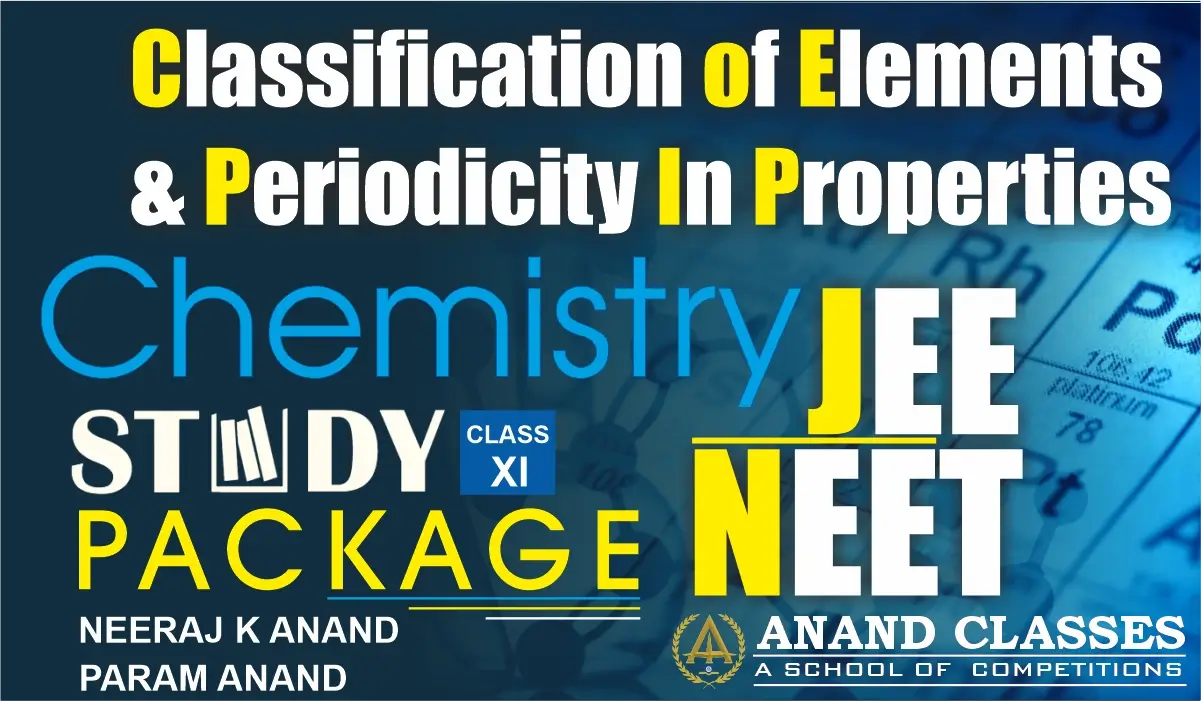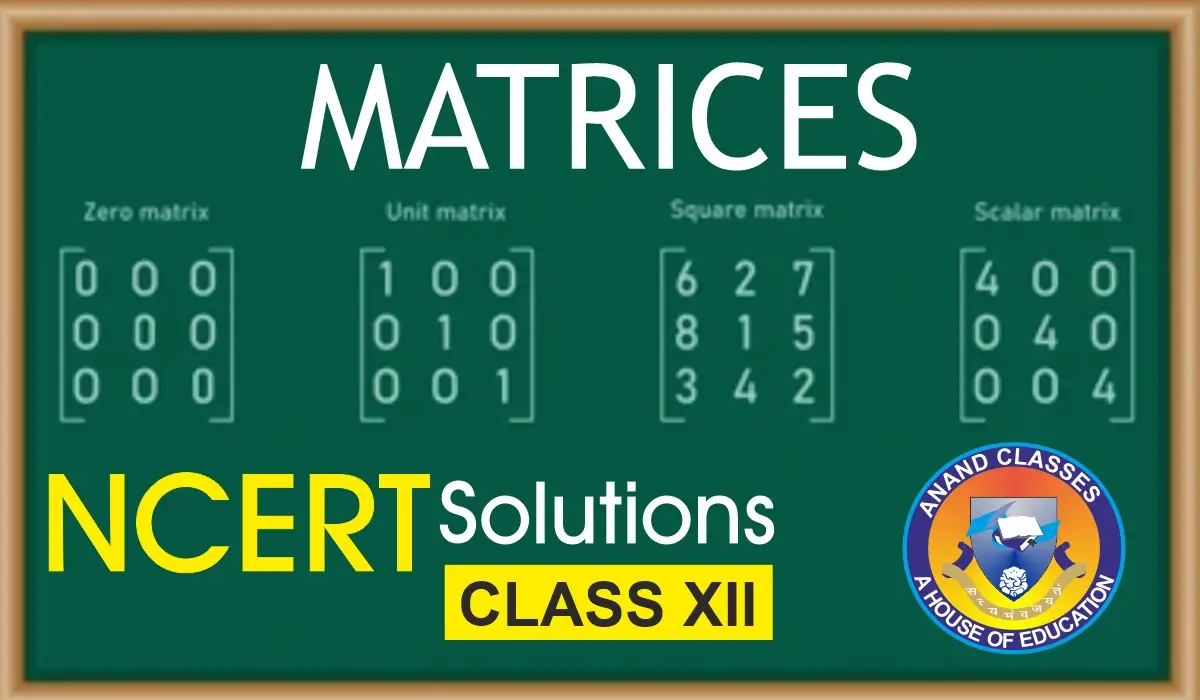Anand Classes explains the number of elements in each period of the periodic table follows the pattern 2, 8, 8, 18, 18, 32, 32 due to the way electrons fill atomic orbitals according to the Aufbau principle and the (n + l) rule. Each period corresponds to the filling of a new principal energy level, and the number of elements in that period depends on the total electron capacity of the subshells being filled. Understanding this explains why the 1st period has only 2 elements, the 2nd and 3rd periods have 8 elements each, the 4th and 5th periods have 18, and the 6th and 7th periods have 32 elements — an important concept for Class 11 Chemistry, JEE, and NEET.
1. Basic Principle: Electron Capacity and Periods
Each period in the periodic table corresponds to the filling of a set of atomic orbitals as the atomic number increases. The maximum number of electrons that can be accommodated in a shell with principal quantum number nn is 2n22n^2, but period lengths do not simply follow 2n22n^2 because electrons fill subshells (orbitals with different ll) in an energy-ordered sequence, not strictly by increasing nn.
2. Aufbau Principle and (n + l) Rule
- Aufbau principle: Electrons occupy orbitals of lower energy first before moving to higher energy ones.
- (n + l) rule: The energy of an orbital is approximately determined by the sum n+ln + l; the lower the sum, the lower the energy. If two orbitals have the same n+ln + l, the one with smaller nn is lower in energy.
This ordering leads to the actual sequence in which subshells are filled: 1s<2s<2p<3s<3p<4s<3d<4p<5s<4d<5p<6s<4f<5d<6p<7s<5f<6d<7p…
Because of this energy ordering, certain inner subshells begin to fill before higher principal shell subshells complete, which shapes the lengths of the periods.
3. Period-by-Period Explanation
Period 1 – 2 elements (H, He)
- Only the 1s orbital is available.
- 1s1s can hold 2 electrons → Period 1 has 2 elements.
Period 2 – 8 elements (Li to Ne)
- Orbitals involved: 2s and 2p.
- 2s2s: 2 electrons
- 2p2p: 6 electrons
- Total = 2+6=82 + 6 = 8 electrons → 8 elements.
- Filling order: 2s2s then 2p2p.
Period 3 – 8 elements (Na to Ar)
- Orbitals: 3s and 3p only (3d has higher energy and does not begin until after 4s).
- 3s3s: 2
- 3p3p: 6
- Total = 8 → 8 elements.
Period 4 – 18 elements (K to Kr)
- Orbitals filled: 4s, then 3d, then 4p.
- 4s4s: 2
- 3d3d: 10
- 4p4p: 6
- Total = 2+10+6=182 + 10 + 6 = 18 → 18 elements.
Period 5 – 18 elements (Rb to Xe)
- Orbitals: 5s, 4d, 5p
- 5s5s: 2
- 4d4d: 10
- 5p5p: 6
- Total = 18 → 18 elements.
Period 6 – 32 elements (Cs to Rn)
- Orbitals involved: 6s, then 4f, then 5d, then 6p.
- 6s6s: 2
- 4f4f: 14
- 5d5d: 10
- 6p6p: 6
- Total = 2+14+10+6=322 + 14 + 10 + 6 = 32 → 32 elements.
- Note: 4f4f begins filling before 5d5d because of the (n + l) ordering—4f4f has lower energy than 5d5d initially.
Period 7 – 32 elements (Fr to Og)
- Orbitals: 7s, 5f, 6d, 7p
- 7s7s: 2
- 5f5f: 14
- 6d6d: 10
- 7p7p: 6
- Total = 32 → 32 elements.
- Analogous to period 6, but with the 5f filling (actinides) instead of 4f.
4. Why the Pattern Is 2, 8, 8, 18, 18, 32, 32…
The length of each period reflects the number of electrons required to fill the set of subshells that become available at that stage in the Aufbau filling order. The pattern arises because:
- Periods 2 and 3 only involve s and p subshells → 8 each.
- Periods 4 and 5 include d-subshell filling (after the preceding s) → 18 each.
- Periods 6 and 7 additionally include f-subshell filling (before the corresponding d and p of the same principal quantum number) → 32 each.
5. Exceptions & Subtleties
- Order of orbital energies can shift slightly in real atoms due to electron-electron interactions and relativistic effects (especially in heavier elements), leading to anomalies in actual electron configurations (e.g., Cr: [Ar] 3d⁵ 4s¹, Cu: [Ar] 3d¹⁰ 4s¹). These do not change period lengths but affect the precise fill order locally.
- Lanthanide and actinide series are often placed separately to keep the table compact, but their filling (4f and 5f) is what causes period 6 and 7 to expand to 32 elements.
6. Visualization Tip
If you draw the periodic table with a mapping of which subshell is being filled across the horizontal axis, you’ll see contiguous blocks:
- s-block: 1st two columns
- p-block: last six columns in a period (when applicable)
- d-block: middle ten columns (transition metals)
- f-block: separate rows corresponding to insertion between s and d of periods 6 and 7
7. Summary Table of Orbital Contributions per Period
| Period | Subshells Filling | Electron Capacity | No. of Elements |
|---|---|---|---|
| 1 | 1s | 2 | 2 |
| 2 | 2s, 2p | 8 | 8 |
| 3 | 3s, 3p | 8 | 8 |
| 4 | 4s, 3d, 4p | 18 | 18 |
| 5 | 5s, 4d, 5p | 18 | 18 |
| 6 | 6s, 4f, 5d, 6p | 32 | 32 |
| 7 | 7s, 5f, 6d, 7p | 32 | 32 |
❓ FAQs on Number of Elements in Periods of the Periodic Table
Q1. Why does the first period have only 2 elements?
Answer: The first period contains only the 1s orbital, which can hold a maximum of 2 electrons. Hence, it has only Hydrogen (H) and Helium (He).
Q2. Why do the 2nd and 3rd periods have 8 elements each?
Answer: In the 2nd period (n = 2), the orbitals 2s and 2p are filled, which can hold 2 + 6 = 8 electrons.
In the 3rd period (n = 3), only 3s and 3p are filled (3d is filled later), giving 8 elements.
Q3. Why do the 4th and 5th periods have 18 elements?
Answer: They include the filling of s, d, and p orbitals:
- Example (Period 4): 4s (2 electrons) + 3d (10 electrons) + 4p (6 electrons) = 18 electrons → 18 elements.
Q4. Why do the 6th and 7th periods have 32 elements?
Answer: They include the filling of s, f, d, and p orbitals:
- Example (Period 6): 6s (2) + 4f (14) + 5d (10) + 6p (6) = 32 electrons → 32 elements.
Q5. What determines the number of elements in a period?
Answer: The number of elements in a period is determined by the total electron capacity of the subshells filled in that period according to the Aufbau principle and (n + l) rule.
Q6. What is the pattern of the number of elements in each period?
Answer: The sequence is: 2, 8, 8, 18, 18, 32, 32 for periods 1 to 7 respectively.
📚 Buy Study Material & Join Our Coaching
For premium study materials specially designed for JEE, NEET, NDA, and CBSE/ICSE Classes, visit our official study material portal:
👉 https://anandclasses.net.in/
To enroll in our offline or online coaching programs, visit our coaching center website:
👉 https://anandclasses.co.in/
📞 Call us directly at: +91-94631-38669
💬 WhatsApp Us Instantly
Need quick assistance or want to inquire about classes and materials?
📲 Click below to chat instantly on WhatsApp:
👉 Chat on WhatsApp
🎥 Watch Video Lectures
Get access to high-quality video lessons, concept explainers, and revision tips by subscribing to our official YouTube channel:
👉 Neeraj Anand Classes – YouTube Channel


